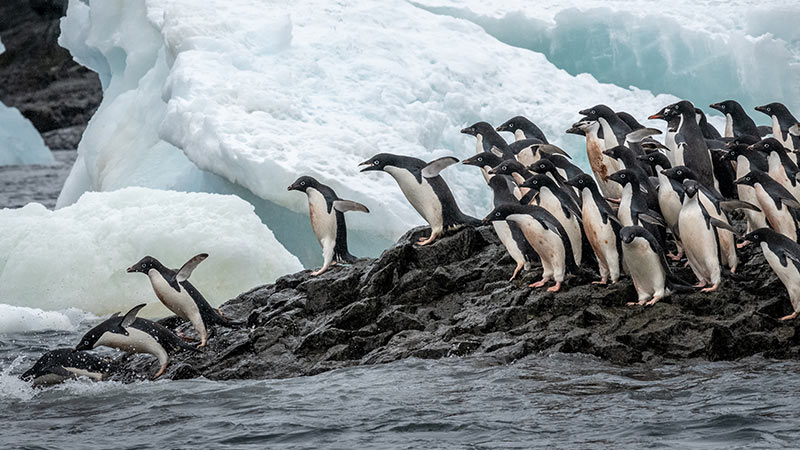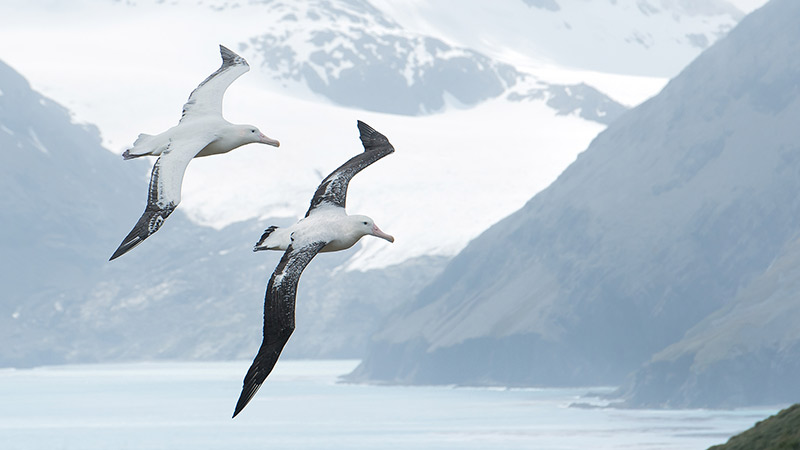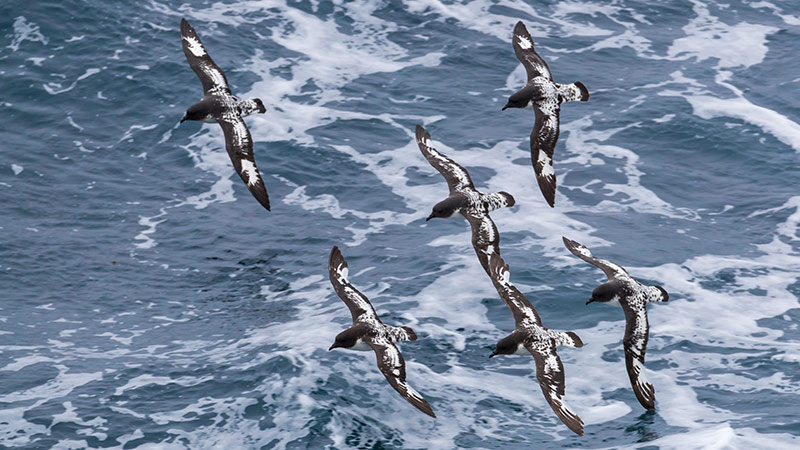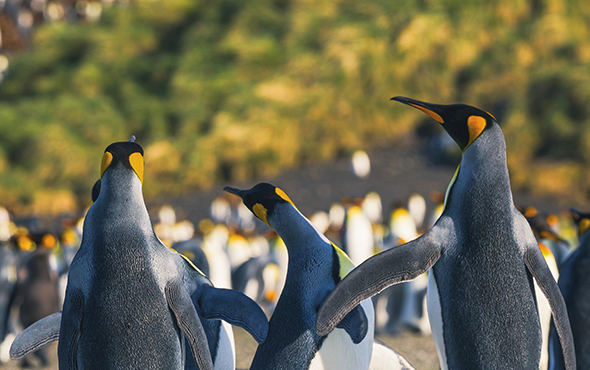Inspiration
From Penguins to Albatrosses: 8 Birds to See in Antarctica
Some of my favorite birds are found nowhere else on the planet but in Antarctica, and a must see for any bird lover plotting an expedition to the White Continent. The especially good news: Most of these birds are easy to spot both at sea and on Antarctica’s most beautiful islands, including wildlife-packed South Georgia and the Falklands.
From the bright-white snow petrel unmistakable among the pack ice to the predatory brown and south polar skuas — those marauders of the penguin colonies — the flying birds from Antarctica are something you’ll encounter while cruising across the Drake Passage. Those who witness these magnificent seabirds in action are quick to see how they rival the more popular show-stopping penguins, if only for their beauty, grace and adaptability.
Speaking of the penguins of Antarctica, the Adélie is my absolute favorite, because what they lack in colorful plumage they make up for in comical displays, vocalizations and general goofiness. The funniest thing is to watch them gathering pebbles for their nests, especially when they steal each other’s pebbles at the same time. This goes on throughout the breeding season and is a source of endless entertainment.
Adélies are also fun to watch when entering the water. One or two by themselves do not want to go in for fear of a leopard seal, which can eat up to ten penguins a day. So, these silly penguins of Antarctica wait until there is a group. Once assembled, they start calling in a frenzy, pushing each other from behind and all at once go tumbling into the sea. I always say it takes ten Adélie penguins to make a decision.

The comical Adélie penguins of Antarctica
Another spectacular penguin species that is a treat to see is the brightly colored and always-busy king penguin. Unlike most penguins, they lay one large egg that they must balance on their feet to incubate for 55 days, and then later protect the chick, which then takes nine months to fledge. The brightly colored auricular patch on their necks, along with their pinkish to purplish beaks provide photographers with incredible opportunities, especially when they are trumpeting and courting. But the most incredible thing to see is the sheer magnitude of the big breeding colonies of these penguins of Antarctica, sometimes numbering in the tens of thousands. It is a magical display of the animal kingdom, something A&K guests who cruise to South Georgia get to see.
The wandering albatross is another creature among Antarctica’s most spectacular birds. The star of the wind and waves, this majestic seabird dynamically soars and rises higher and higher by using the near-constant updrafts and then falls forward seemingly without moving a muscle. The largest flying seabird in the world, it weighs nearly 25 pounds and has a wingspan approaching 12 feet. The wandering albatross can remain aloft for perhaps 20 days, though they do rest on the water when there is no wind. This Antarctica bird plunge-dives under water to feed on squid and fish, travelling thousands and thousands of miles. They don’t breed until they are about eight years old, and this is only after a few years of elaborate and vocal courtship rituals where they choose an appropriate mate for life. Wandering albatrosses take approximately 300 days to fledge their one big chick, and adults can live up to sixty years.

The wandering albatross is one of Antarctica's most impressive birds
Perhaps the most beautiful of all albatrosses is the light-mantled sooty albatross, an absolute stunner among Antarctica birds for its charcoal grey head, light grey body, pale “mantle” between the shoulders, and a small white, crescent-moon shaped eye patch. Light-mantled sooties are most commonly seen around South Georgia, where they nest on steep tussock-covered hillsides. With a bit of luck, you can hear their haunting courtship calls echoing off the cliffsides.
Known to most of us at least in theory, the Antarctic tern is an impressive, high-flying bird known to be fast, loud, territorial and sometimes very aggressive. It is also the only tern species to breed in the Antarctic Peninsula. Antarctic terns are unmistakable with their coral red beaks and nearly translucent grey pointy wings. We see them on many landing sights, usually nesting and raising hell in the scree slope rubble where their few eggs and chicks are camouflaged. Among the birds from Antarctica, they are perhaps best known for their spectacularly long migrations, which occur after the breeding season as they head north, sometimes all the way to the Arctic latitudes.
Once we cross the Antarctic Convergence, a very fun and sociable species of bird starts following us until we reach the Antarctic Peninsula: the cape petrel. This constantly flapping and gliding powerhouse stays with us day and night, perhaps hoping we might stir up some food as we sail southward. They are excellent at picking up the smell of any food that is dead or decaying on the surface of the ocean, but they will also perform shallow dives for krill and other zooplankton.
If I come back in another life as any one of Antarcica’s birds, the cape petrel is it. They are smart, beautiful, fast, sociable, seem to have a lot of friends and a lot of fun, and they nest in one of the most beautiful places on earth: the islands of the Antarctic Peninsula and South Georgia.

Among the smartest and strongest birds from Antarctica, the cape petrel
 The Americas
The Americas Europe, Middle East and Africa
Europe, Middle East and Africa Australia, NZ and Asia
Australia, NZ and Asia



 The Americas
The Americas
 Europe, Middle East and Africa
Europe, Middle East and Africa Australia, NZ and Asia
Australia, NZ and Asia